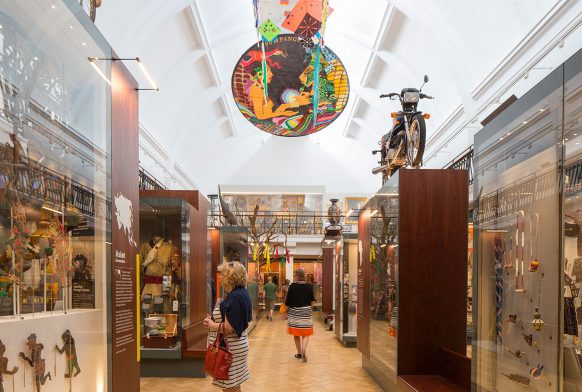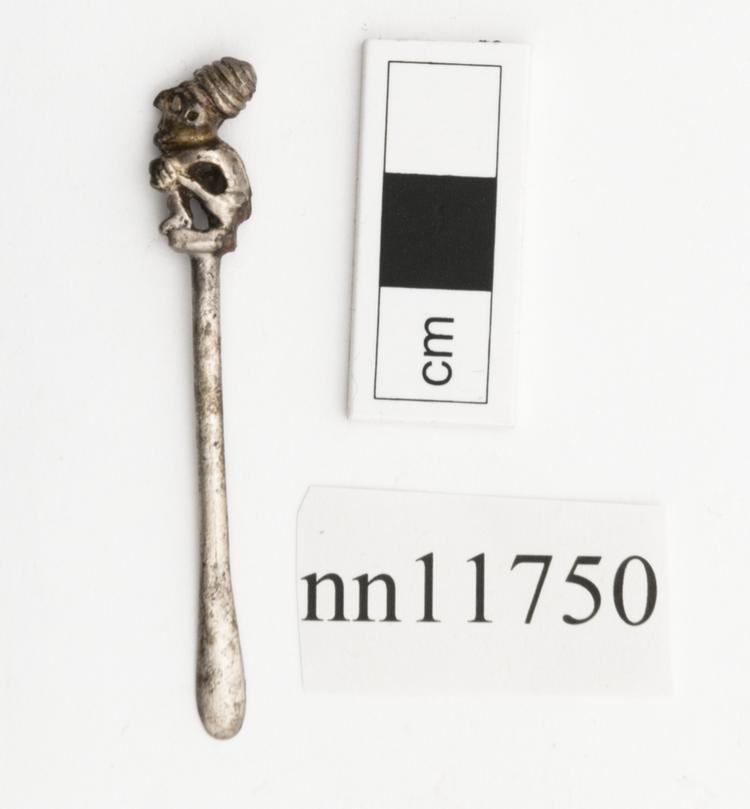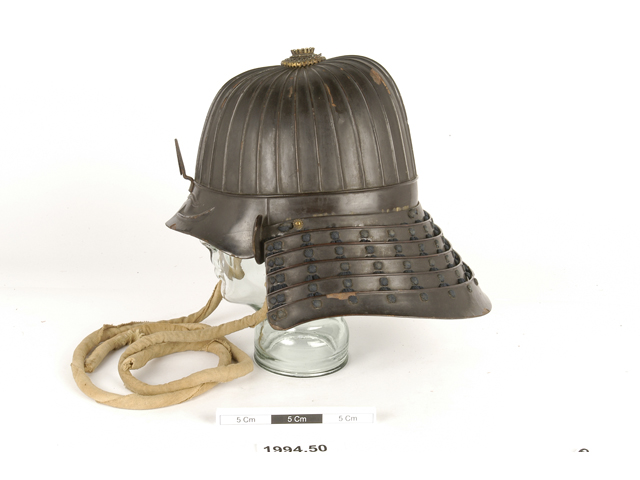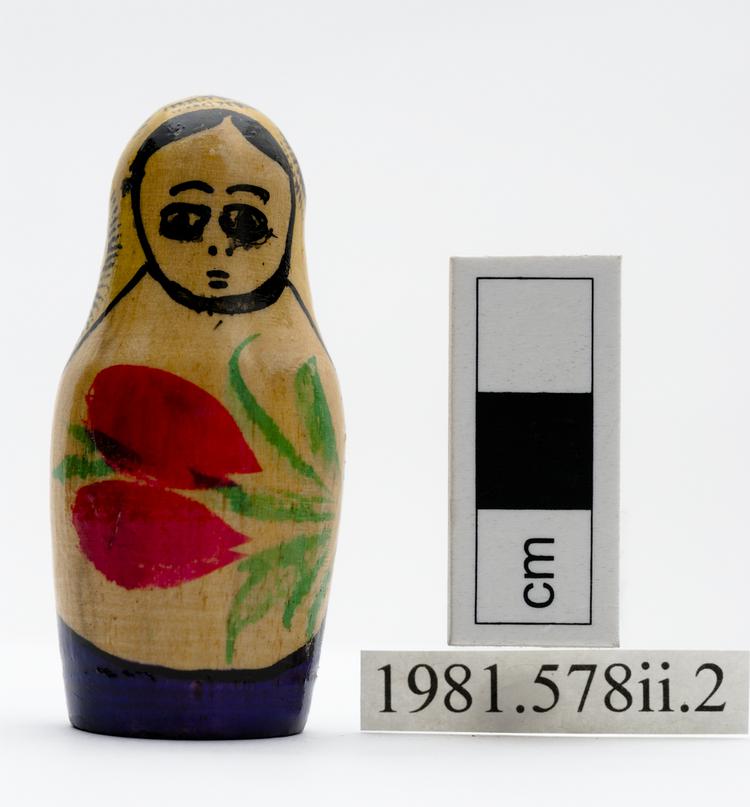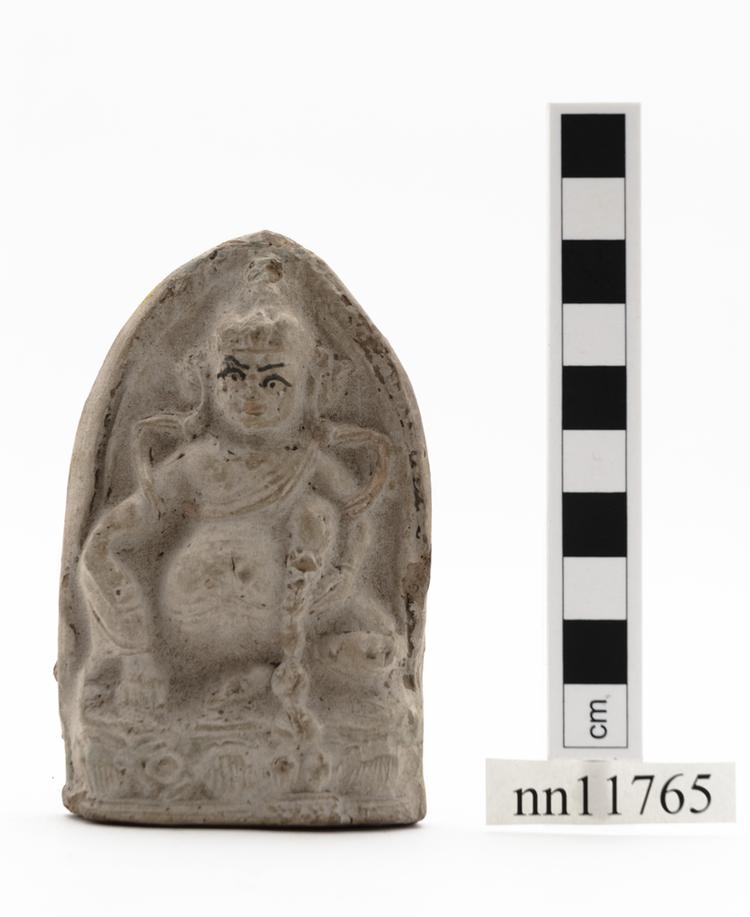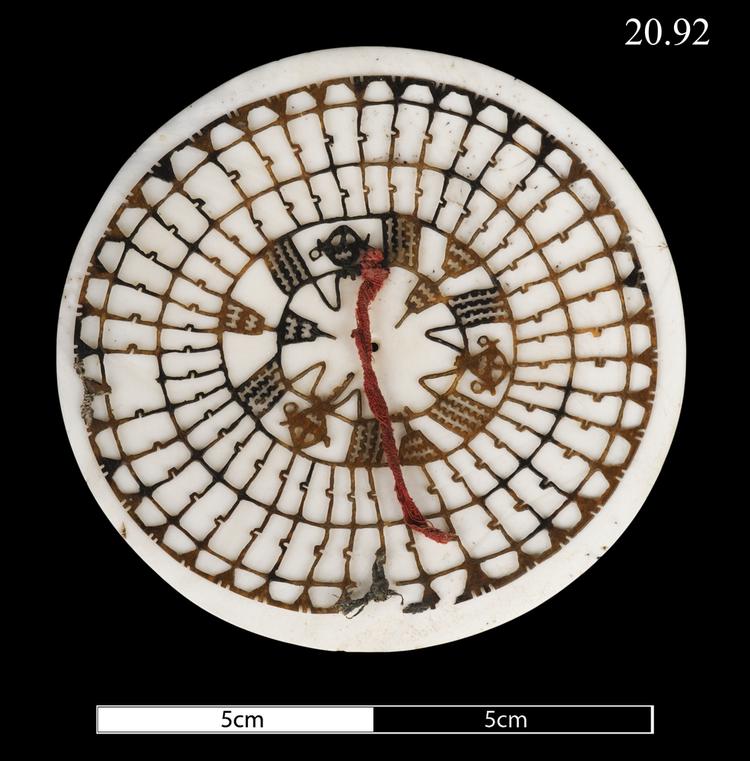
Clam and turtleshell forehead ornament, with human figure designs in the tortoiseshell.
Head Ornament, Dala, Solomon Islands, Central Melanesia. This Solomon Islands dala is one version of the widespread Melanesian head ornament type made from clam shell & turtleshell discs. Often called kapkap after their New Ireland name, these ornaments occur from western New Guinea through to the eastern Solomons, and even have some similarities with head ornaments made as far away as the Marquesas Islands in remote Polynesia. The workmanship involved is very considerable: a shell of the Giant Clam (Tridacna gigas) is painstakingly ground down into a perfectly circular and flawless flat white disk, and drilled with a little hole in the centre. A slightly smaller disk of Hawksbill turtleshell (Eretmochelys imbricata) is also made. This is finely cut out in elaborate symmetrical patterns of fretwork with an almost lace-like precision and lightness. When overlaid on the white Tridacna disk, the stark contrast is very attractive. These were worn as centre-pieces for headbands, or neck pendants, and were highly valued ornaments. As can be seen from this example, some of the Solomon Islands dala have representational elements cut into their turtleshell: frigate-birds were a popular subject in the Santa Cruz group, but this example here contains human figures. Shell, turtleshell, coconut fibre. Late 19th Century.



